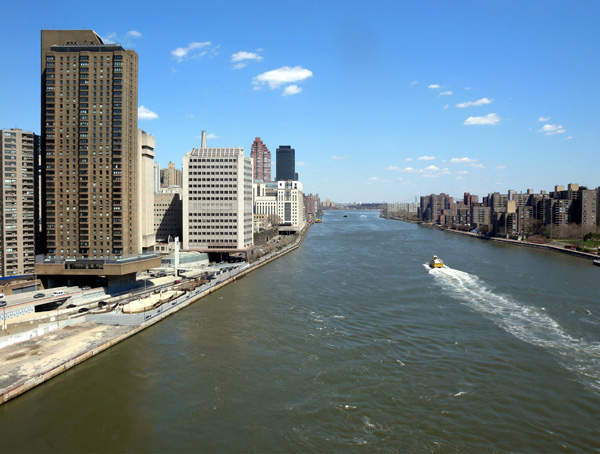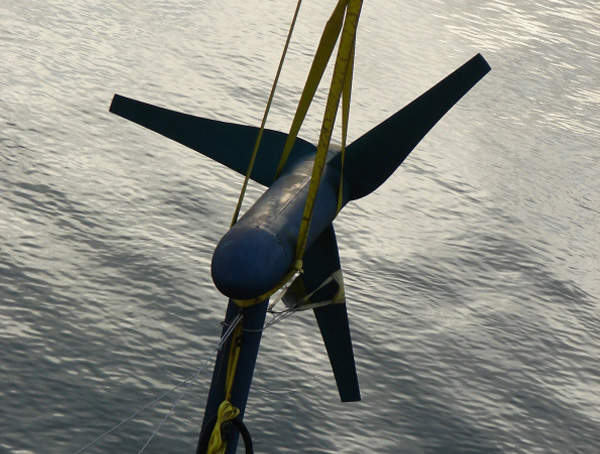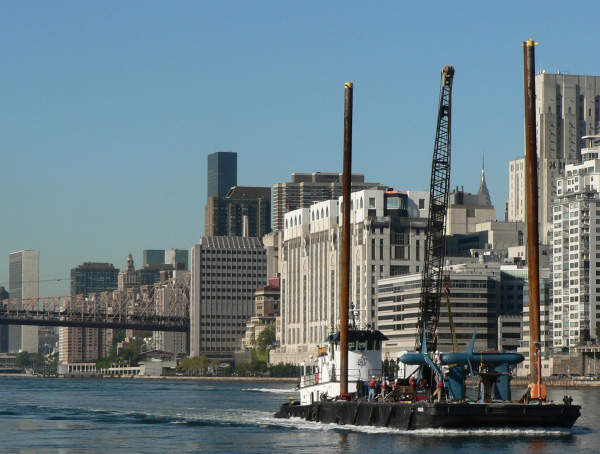Roosevelt Island Tidal Energy (RITE) project is being developed in the East Channel of New York’s East River, in the US. The one megawatt pilot wave power project is being executed by Verdant Power.
RITE is the first tidal project in the US to have received the Federal Energy Regulatory Commission’s (FERC) commercial pilot license. The license was issued in January 2012 for a period of ten years.
Upon completion in 2014, the project will have the world’s first group of grid-connected tidal turbines. It is expected to generate 2.4GWh of electricity annually.
Development of the Roosevelt Island Tidal Energy project
Verdant is developing the RITE project in three phases. The first phase included prototype testing carried out between 2002 and 2006. Based on the results of this phase, permits were granted by the FERC for the phase two demonstration.
Demonstration phases were carried out from 2006 to 2009. A six turbine array was installed in May 2007 as part of this phase. The turbines were installed in three rows, at a spacing of 100ft from each other. The foundation system for each turbine included a pile top mount resting on six monopiles driven into the river bed.
Five of the turbines were equipped with 35kW induction generators. Electricity generated by phase two was delivered to the Gristedes supermarket and the Roosevelt Island Operating Corporation’s parking facility.
The demonstration phase showed that a turbine peak efficiency of 38% to 44% can be achieved in water current speeds of 1.8kts to 4.2kts. This phase delivered about 50MWh of electricity to the users and was concluded in October 2008. Based on the results of this phase, an improved version of the turbines was developed by Verdant.
The third phase is currently being carried out and includes commercial pilot scale build-out. It will occupy an area of 21.6 acres and will be monitored remotely.
Details of the one megawatt pilot wave power facility
The tidal power plant includes the installation of 30 Gen5 turbines with a capacity of 35kW each. The turbines will be connected to 480v underwater cables, which will in turn connect to five switchgear vaults. The switchgear located on the shoreline will be connected to a control room. The pilot project also includes the installation of equipment for navigational safety and operation.
Two turbines will be installed initially and the remaining will be gradually installed in phases.
Plant make-up for New York’s RITE project
The RITE project will include Verdant’s free flow kinetic hydropower system (KHPS), consisting of horizontal-axis turbines with three rotors.
The system converts kinetic energy of the river currents into electricity. It is completely installed underwater and runs along with the natural flow of the water.
The turbine blades move at a constant speed of 40rpm, being boosted by a speed accelerator. An induction generator enclosed in a waterproof nacelle is connected to the accelerator. The nacelle is mounted on a pylon and also contains the gearbox. The entire turbine and other systems are made of stainless steel and reinforced plastic, with high performance anti-corrosion coatings.
The system operates silently and is invisible from the shore, reducing any visual impact. It is modular and does not require the construction of any dams or other infrastructure which makes it cost effective.
KHPS is also scalable for installation of projects of any size in villages, cities or deep sea areas. It can be directly installed in populated areas and eliminates the need for transmission lines. The system can be integrated into water purification systems to reduce operational cost and increase energy efficiency.
Contractors involved with Verdant Power’s power plant
Devine Tarbell & Associates was the lead consultant for the project. BioSonics carried out hydroacoustic fish monitoring to assess the environmental impact of the project.
Potential for tidal power generation in New York
New York’s power generation capacity from kinetic energy is estimated at 500MW to 1,000MW. Apart from the East River, the St. Lawrence and Niagara Rivers are also good sources of kinetic hydropower. Verdant’s KHPS can be installed in these locations cost effectively, providing clean renewable electricity and reducing greenhouse emissions.






